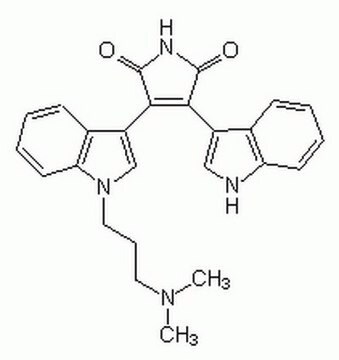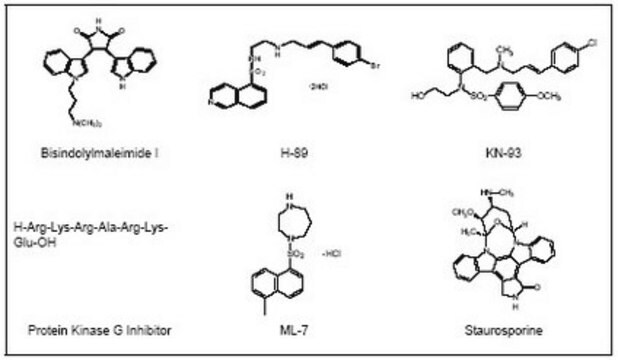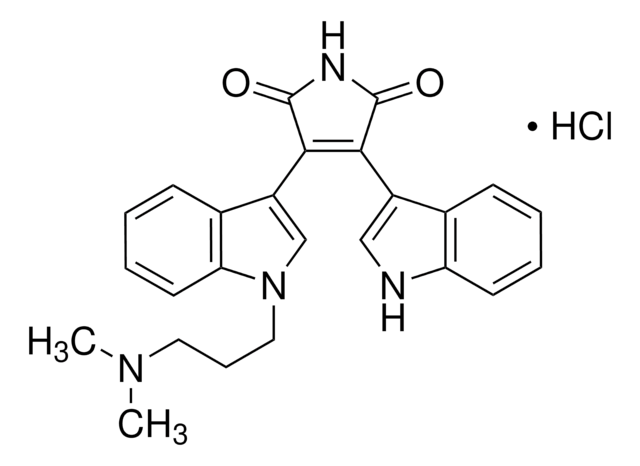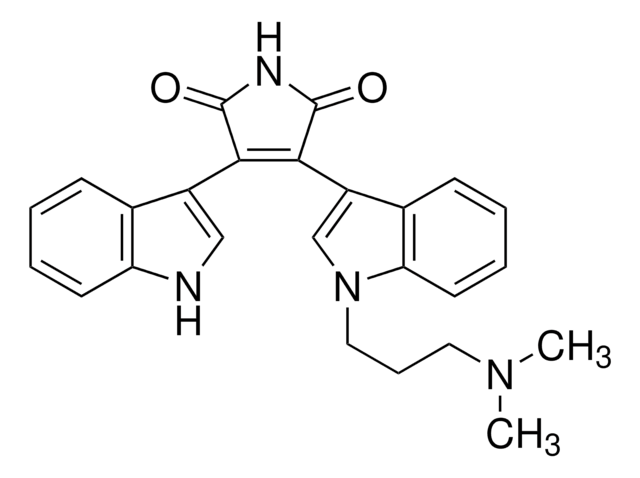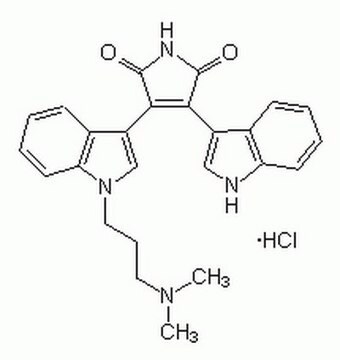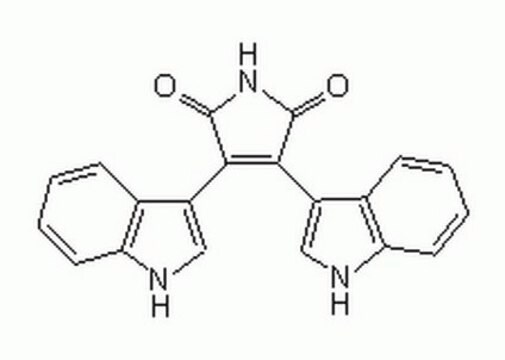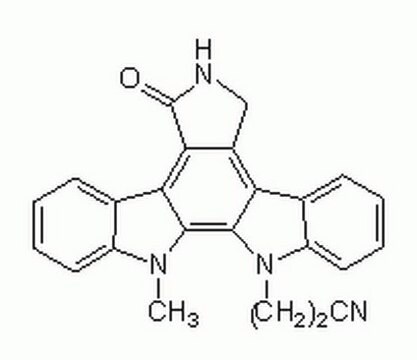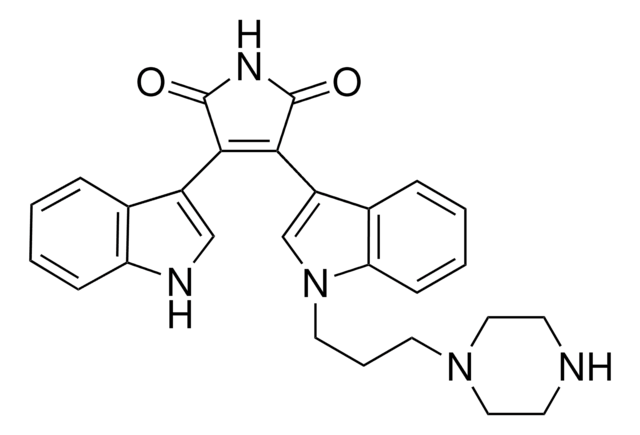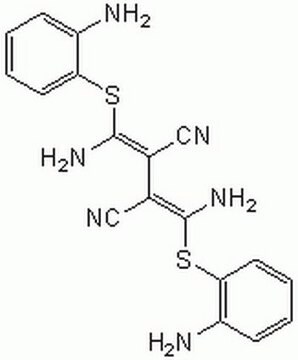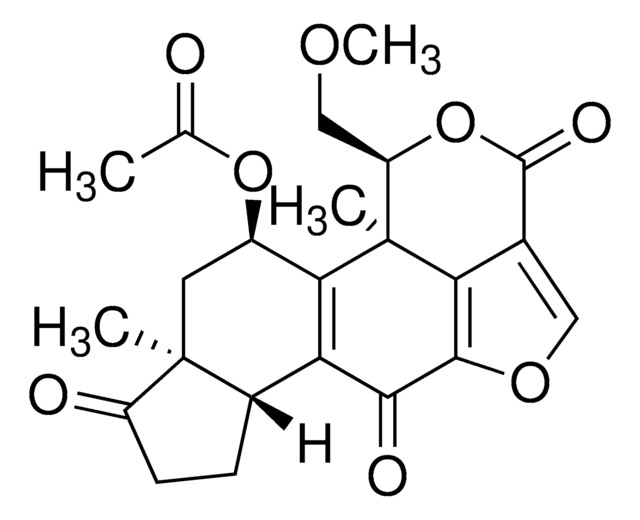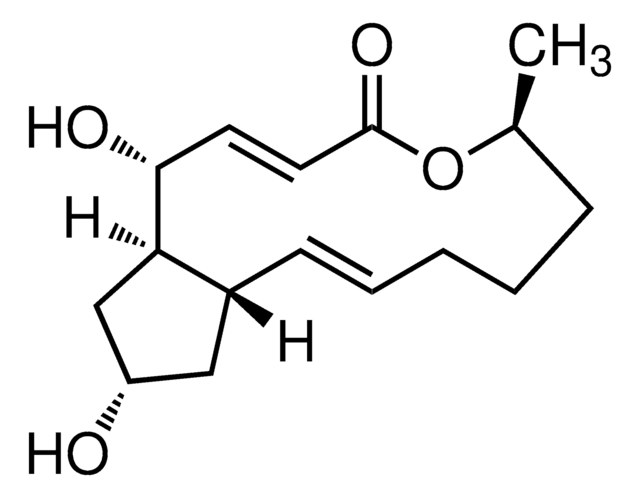203290
Bisindolylmaleimide I
A highly selective, cell-permeable, and reversible protein kinase C (PKC) inhibitor (IC₅₀ = 10 nM) that is structurally similar to staurosporine.
Synonyme(s) :
Bisindolylmaleimide I, 2-[1-(3-Dimethylaminopropyl)-1H-indol-3-yl]-3-(1H-indol-3-yl)-maleimide, Gö 6850, GF 109203X
About This Item
Produits recommandés
Niveau de qualité
Essai
≥95% (HPLC)
Forme
solid
Fabricant/nom de marque
Calbiochem®
Conditions de stockage
OK to freeze
protect from light
Couleur
deep orange
Solubilité
DMSO: 10 mg/mL
Conditions d'expédition
ambient
Température de stockage
2-8°C
Chaîne SMILES
N1C(=O)C(=C(C1=O)c4c5c([nH]c4)cccc5)c2c3c([n](c2)CCCN(C)C)cccc3
InChI
1S/C25H24N4O2/c1-28(2)12-7-13-29-15-19(17-9-4-6-11-21(17)29)23-22(24(30)27-25(23)31)18-14-26-20-10-5-3-8-16(18)20/h3-6,8-11,14-15,26H,7,12-13H2,1-2H3,(H,27,30,31)
Clé InChI
QMGUOJYZJKLOLH-UHFFFAOYSA-N
Description générale
Actions biochimiques/physiologiques
PKC
Avertissement
Notes préparatoires
Reconstitution
Autres remarques
Ku, W.-C., et al. 1997. Biochem. Biophys. Res. Commun. 241, 730.
Gekeler, V., et al. 1996. Br. J. Cancer 74, 897.
Kiss, Z., et al. 1995. Biochim. Biophys. Acta 1265, 93.
Toullec, D., et al. 1991. J. Biol. Chem. 266, 15771.
Informations légales
Code de la classe de stockage
11 - Combustible Solids
Classe de danger pour l'eau (WGK)
WGK 3
Certificats d'analyse (COA)
Recherchez un Certificats d'analyse (COA) en saisissant le numéro de lot du produit. Les numéros de lot figurent sur l'étiquette du produit après les mots "Lot" ou "Batch".
Déjà en possession de ce produit ?
Retrouvez la documentation relative aux produits que vous avez récemment achetés dans la Bibliothèque de documents.
Les clients ont également consulté
Notre équipe de scientifiques dispose d'une expérience dans tous les secteurs de la recherche, notamment en sciences de la vie, science des matériaux, synthèse chimique, chromatographie, analyse et dans de nombreux autres domaines..
Contacter notre Service technique